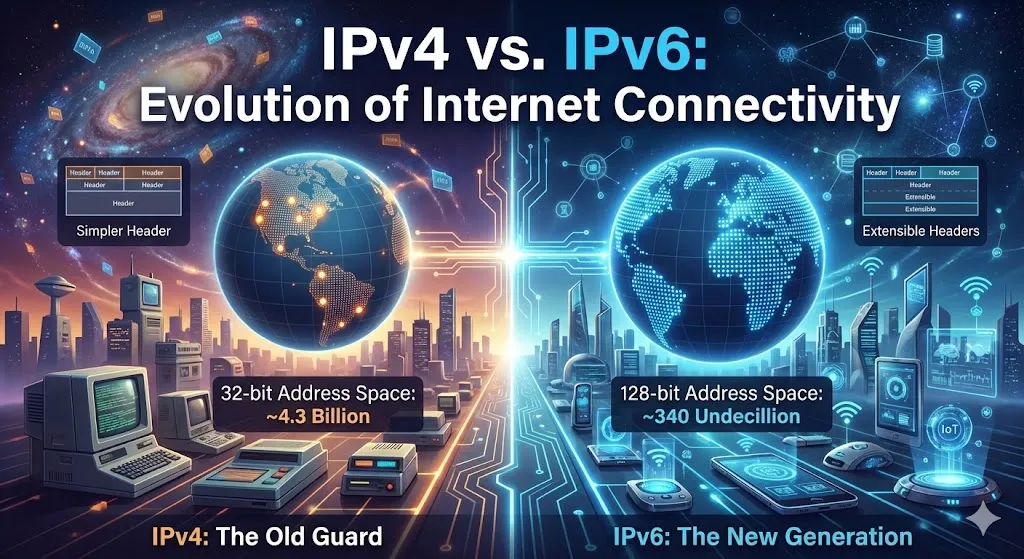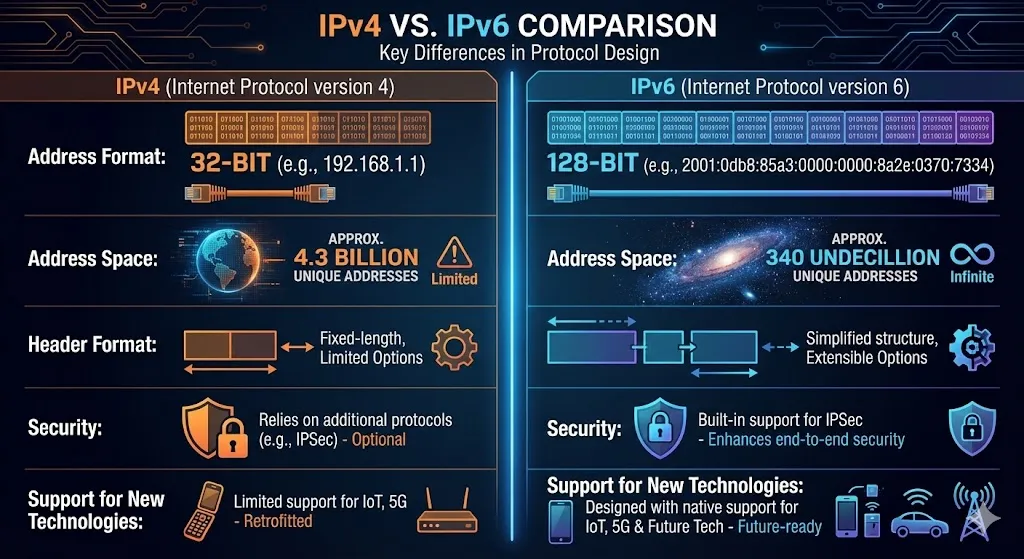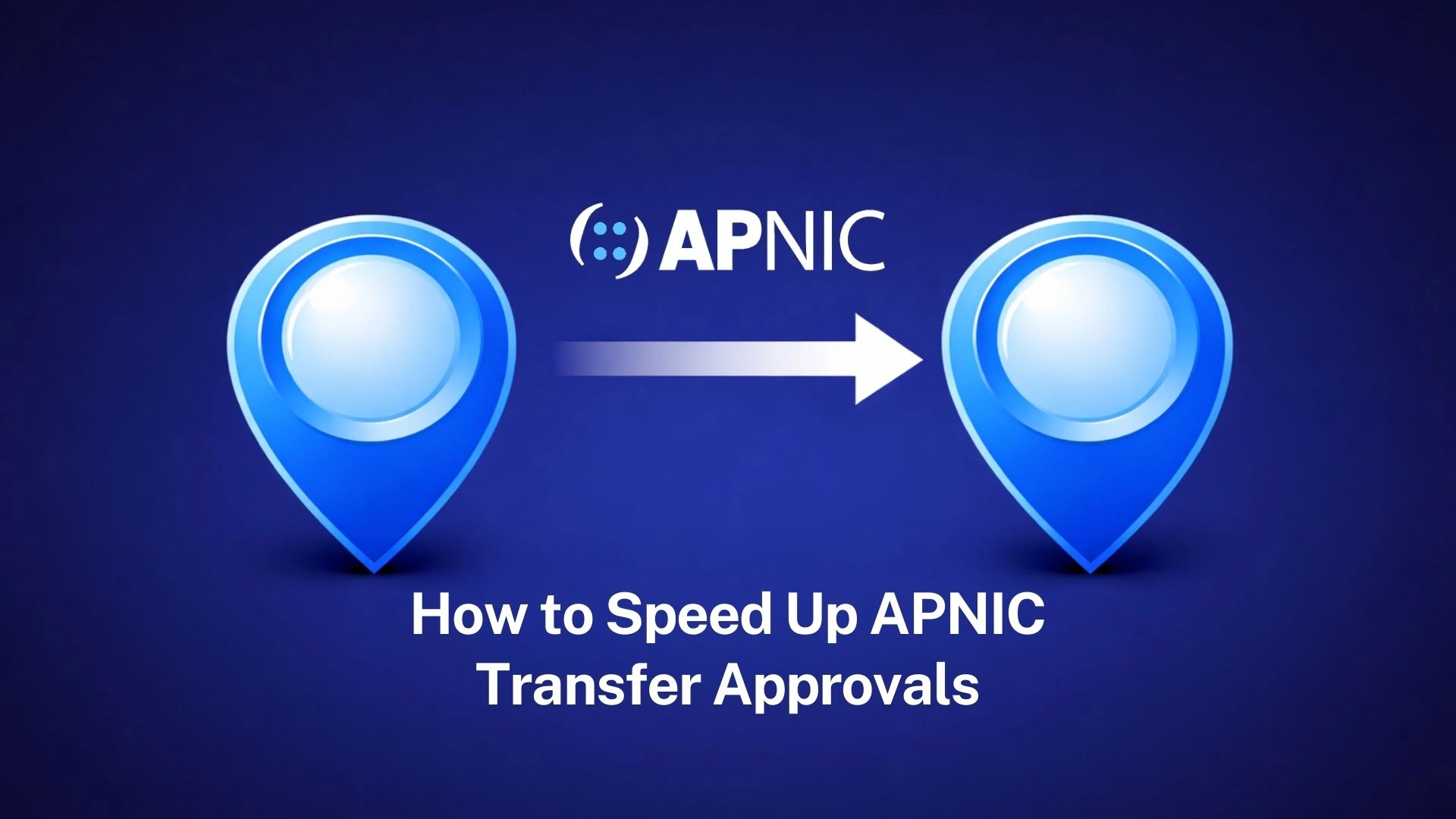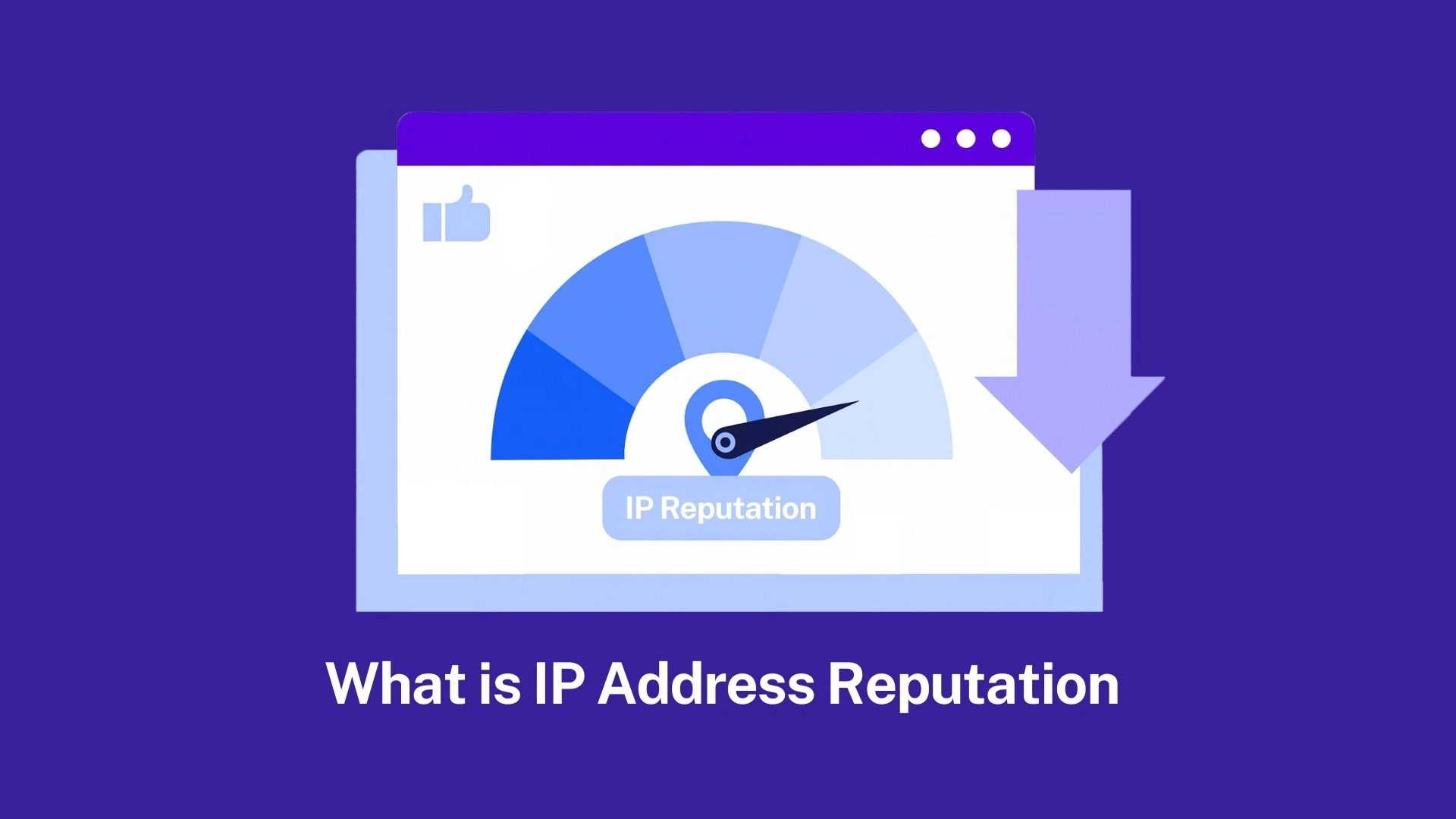IPv4 and IPv6. What’s the difference?

Foreword: In today’s interconnected world, where virtually every aspect of our lives relies on the internet, understanding the fundamentals of internet protocols is essential.
Table of Contents
Toggle
Among these protocols, IPv4 (Internet Protocol version 4) and IPv6 (Internet Protocol version 6) are two of the most vital components that govern how devices communicate over the Internet. Despite their shared purpose of facilitating data transmission, IPv4 and IPv6 have distinct characteristics and play different roles in shaping the future of the Internet.
In this comprehensive guide, we’ll delve into the key differences between IPv4 and IPv6, exploring their features, limitations, and implications for the digital landscape.
IPv4: The Old Guard

IPv4, the fourth version of the Internet Protocol, has been the cornerstone of Internet communication since its inception. Launched in the early 1980s, IPv4 introduced a standardized method for identifying and routing data packets across computer networks. At the heart of IPv4 is its 32-bit address format, which allows for approximately 4.3 billion unique addresses. While this seemed like an ample supply at the time of its creation, the explosive growth of the internet and the proliferation of internet-connected devices have led to the exhaustion of available IPv4 addresses. Today, IPv4’s limitations are evident as organizations scramble to obtain scarce IPv4 addresses or transition to IPv6.
IPv6: The New Generation

Enter IPv6, the successor to IPv4 designed to address the limitations of its predecessor. IPv6 adopts a 128-bit address format, providing an astronomical number of unique addresses—approximately 340 undecillion (3.4×10^38). This vast address space ensures an inexhaustible supply of addresses, accommodating the exponential growth of internet-connected devices for generations to come. Beyond address space, IPv6 offers several improvements over IPv4, including enhanced security, simplified network configuration, and support for emerging technologies such as the Internet of Things (IoT) and 5G networks.
Key Differences Between IPv4 and IPv6

Address Format:
IPv4: 32-bit address format (e.g., 192.168.1.1)
IPv6: 128-bit address format (e.g., 2001:0db8:85a3:0000:0000:8a2e:0370:7334)
Address Space:
IPv4: Approximately 4.3 billion unique addresses
IPv6: Approximately 340 undecillion unique addresses
Header Format:
IPv4: Fixed-length header with limited options
IPv6: Simplified header structure with extensible options
Security:
IPv4: Relies on additional protocols (e.g., IPSec) for security
IPv6: Built-in support for IPSec, enhancing end-to-end security
Support for New Technologies:
IPv4: Limited support for emerging technologies such as IoT and 5G
IPv6: Designed with native support for IoT, 5G, and other future technologies
IP Industry Implications and Future Outlook
As the transition from IPv4 to IPv6 gains momentum, organizations could adapt to the evolving internet landscape. While IPv4 will continue to coexist with IPv6 for the foreseeable future, the long-term sustainability of the internet relies on widespread IPv6 adoption. Embracing IPv6 not only addresses the pressing issue of IPv4 address exhaustion but also unlocks new possibilities for innovation and connectivity in the digital age.
IPv4 and IPv6 in a nutshell
In summary, IPv4 and IPv6 represent two distinct eras in internet communication, each with its own strengths and limitations. While IPv4 has served as the backbone of the internet for decades, the rapid expansion of the digital ecosystem necessitates the adoption of IPv6 to ensure continued growth and connectivity. By understanding the differences between IPv4 and IPv6 and embracing the transition to IPv6, organizations can future-proof their networks and pave the way for a more robust and interconnected internet infrastructure.
Trusted IPv4 Leasing for Business Growth
Get enterprise-grade IPv4 space quickly, with seamless deployment and end-to-end management.
FAQs
In many cases, yes. IPv6 is designed to be more efficient. It eliminates the need for NAT (Network Address Translation), which allows for direct end-to-end communication. This reduces the processing overhead at the router level, leading to lower latency and a more efficient routing process for high-bandwidth applications like gaming and VoIP.
No, they are not directly compatible. An IPv4-only device cannot talk to an IPv6-only device without a “translator.” Organizations solve this using Dual-Stack (running both protocols simultaneously) or Tunneling (wrapping IPv6 packets inside IPv4 packets) to ensure seamless communication during the transition period.
The main reason is legacy infrastructure. Much of the world’s current hardware, software, and enterprise systems were built specifically for IPv4. Replacing or upgrading all this equipment is expensive and time-consuming. This is why a massive market for IPv4 leasing and brokerage exists—to provide businesses with the “old guard” addresses they still need to operate.
Standfirst APNIC IPv4 transfers can stall on documentation, timing, and registry hygiene. Preparation, pre-approval, and clean records materially accelerate outcomes. Read more
Standfirst — As IPv4 remains scarce, some nations show particularly strong demand for legacy IP resources. Knowing which helps guide Read more
A clear comprehension of the discrepancies between IP reputation and IP risk score constitutes a critical prerequisite for effective cybersecurity Read more



